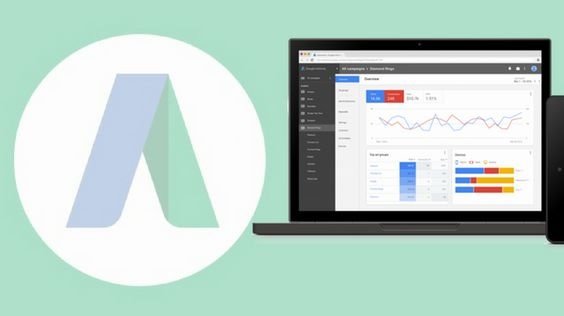In today’s digital world, Google AdWords (now called Google Ads) is a dominant player in the field of pay-per-click (PPC) advertising. Businesses of all sizes leverage Google Ads to drive targeted traffic to their websites, increase sales, and improve brand visibility. Effective management of a Google Ads campaign requires strategic planning, ongoing optimization, and a deep understanding of the platform’s nuances. This guide explores the essential aspects of AdWords PPC management, offering insights on how to maximize your return on investment (ROI) and run successful ad campaigns.
1. What is PPC and Why Google Ads?
Pay-per-click (PPC) is an advertising model in which advertisers pay each time a user clicks on their ad. Unlike traditional advertising, where you pay for ad space regardless of performance, PPC ensures you only pay when your ad generates action, making it a cost-effective method of acquiring customers.
Google Ads is the most popular PPC platform, with access to over 90% of global internet users via Google’s search network, display network, and partner sites. By bidding on keywords relevant to your business, your ads appear when potential customers search for those terms, ensuring that you’re reaching a highly targeted audience.
2. Key Components of Google AdWords

To effectively manage a Google Ads campaign, you need to understand the key components that make up a successful ad strategy:
a) Keywords
At the core of any AdWords campaign are keywords. These are the terms or phrases that trigger your ad when searched on Google. Keyword research is a vital first step in AdWords PPC management, as it helps identify which queries are most relevant to your product or service. Keywords can be categorized into:
- Broad match: Ads appear for searches that include variations or synonyms of the keyword.
- Phrase match: Ads show when the exact phrase or a close variation is part of the user’s search.
- Exact match: Ads trigger only when the exact keyword is searched.
- Negative keywords: Prevent ads from appearing for certain search terms that may not convert.
b) Ad Groups
Each campaign is made up of ad groups, which are clusters of ads targeting specific keywords. Grouping related keywords together allows you to create highly targeted ads for different segments of your audience. Well-structured ad groups enable better performance tracking and more focused messaging.
c) Ad Copy
Compelling ad copy is essential for a successful campaign. Your ads should clearly communicate the value of your product or service while encouraging users to click. A well-written ad typically includes:
- A strong headline that captures attention.
- A concise description highlighting your unique selling points.
- A clear call-to-action (CTA) encouraging users to take the next step.
d) Landing Pages
Once a user clicks on your ad, they are directed to a landing page. The page must be relevant to the ad and optimized for conversions. Ensure that your landing pages have a clear CTA, load quickly, and offer the information or service promised in the ad. A seamless user experience post-click can significantly improve your conversion rates.
e) Bidding Strategies
Google Ads operates on a bidding system, where you set a maximum cost-per-click (CPC) you’re willing to pay for each click. There are several bidding strategies depending on your goals:
- Manual bidding: You control the maximum CPC.
- Automated bidding: Google adjusts bids to maximize results based on the campaign goal, such as clicks, conversions, or impressions.
- Target CPA (cost per acquisition): Focuses on driving conversions at a set cost.
- Target ROAS (return on ad spend): Aims to maximize revenue within a set ROAS goal.
3. Campaign Structuring and Optimization

A well-organized campaign structure is essential for optimizing performance and ensuring that you’re allocating your budget effectively. Key considerations include:
a) Campaign Types
Google Ads offers several campaign types, each designed for specific marketing objectives:
- Search Campaigns: Text ads appear on Google’s search engine results pages (SERPs) when users search for relevant keywords.
- Display Campaigns: Image or text ads appear on websites within Google’s display network.
- Shopping Campaigns: Product ads appear on Google Shopping when users search for products.
- Video Campaigns: Video ads run on YouTube or other video partner sites.
Depending on your business goals, a combination of these campaign types may yield the best results.
b) Ad Extensions
Ad extensions provide additional information in your ads, increasing their visibility and click-through rates (CTR). Common extensions include:
- Sitelink extensions: Links to specific pages on your site.
- Call extensions: A clickable phone number for users to contact you directly.
- Location extensions: Shows your business’s address.
- Price extensions: Highlights specific product prices.
Using ad extensions can enhance your ads and provide more opportunities for users to engage with your brand.
c) Budget Allocation
Allocating your ad budget effectively is crucial for maximizing ROI. It’s important to distribute your budget across high-performing campaigns and ad groups, while minimizing spend on underperforming areas. Monitor the performance of each campaign regularly and adjust your spending based on conversions and CPA.
d) Performance Tracking and Reporting
Google Ads offers robust tracking and reporting tools to measure the effectiveness of your campaigns. Key performance indicators (KPIs) to track include:
- CTR (Click-Through Rate): The percentage of users who clicked your ad after seeing it.
- Conversion Rate: The percentage of clicks that resulted in a conversion (e.g., purchase, sign-up).
- Quality Score: A measure of your ad relevance, keyword selection, and landing page experience.
- CPC: How much you’re paying for each click.
- ROAS: The revenue generated for every dollar spent on ads.
By regularly reviewing these metrics, you can identify opportunities for improvement and optimize your campaigns accordingly.
4. Advanced Strategies for AdWords PPC Management
Once you have the basics covered, there are several advanced strategies you can implement to further improve your campaign performance:
a) A/B Testing
Conducting A/B tests on your ads, landing pages, and bidding strategies can help you refine your campaigns. By testing different variations, you can determine what resonates best with your audience and optimize for conversions.
b) Remarketing
Remarketing allows you to show ads to users who have previously interacted with your website or app. This is an effective way to re-engage potential customers who didn’t convert during their first visit, offering them another opportunity to complete their purchase or take action.
c) Dynamic Search Ads
Dynamic Search Ads (DSA) automatically generate ads based on the content of your website, matching relevant search queries. This is particularly useful for large websites with extensive inventories, as it allows you to cover more keywords without having to manually create ads for each one.
d) Audience Targeting
Google Ads enables you to target specific audiences based on demographics, interests, and behaviors. By layering audience data with keyword targeting, you can serve more personalized ads and increase the likelihood of conversions.
5. Common Pitfalls to Avoid

While Google Ads can be a powerful tool, there are some common pitfalls that can hinder your campaign’s success:
- Neglecting Negative Keywords: Failing to use negative keywords can lead to wasted ad spend on irrelevant searches.
- Poor Ad Copy: Unclear or generic ad copy can result in low CTRs and poor Quality Scores.
- Ignoring Mobile Users: Mobile traffic accounts for a significant portion of web searches. Ensure that your ads and landing pages are mobile-friendly.
- Not Setting Clear Goals: Without defined goals, it’s difficult to measure the success of your campaigns. Be clear about whether your focus is on traffic, leads, or sales.
6. Finally to sum up
Effective AdWords PPC management requires a balance of strategy, creativity, and ongoing optimization. From keyword selection and ad copy creation to performance tracking and budget management, every aspect of your campaign contributes to its overall success. By staying informed of best practices, leveraging advanced tools, and continuously refining your approach, you can maximize your advertising ROI and grow your business through Google Ads.
Remember, PPC is not a set-it-and-forget-it approach. Constant testing, monitoring, and fine-tuning are key to staying ahead of the competition and achieving long-term success.









